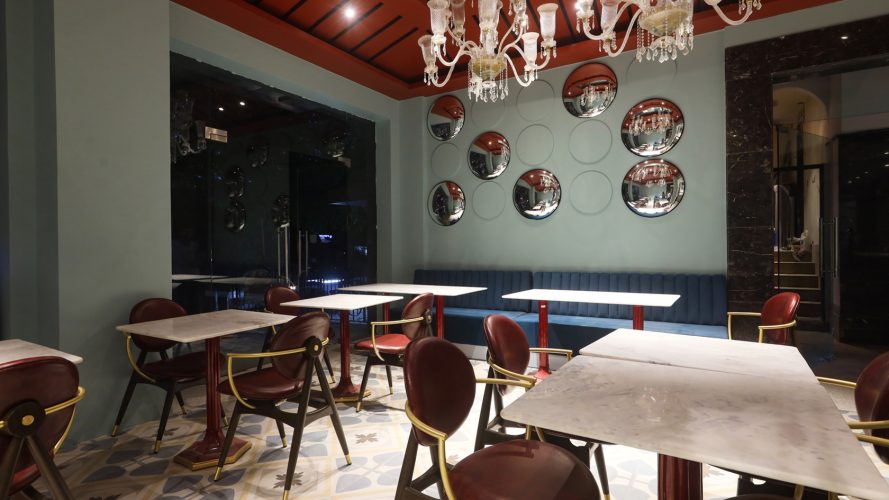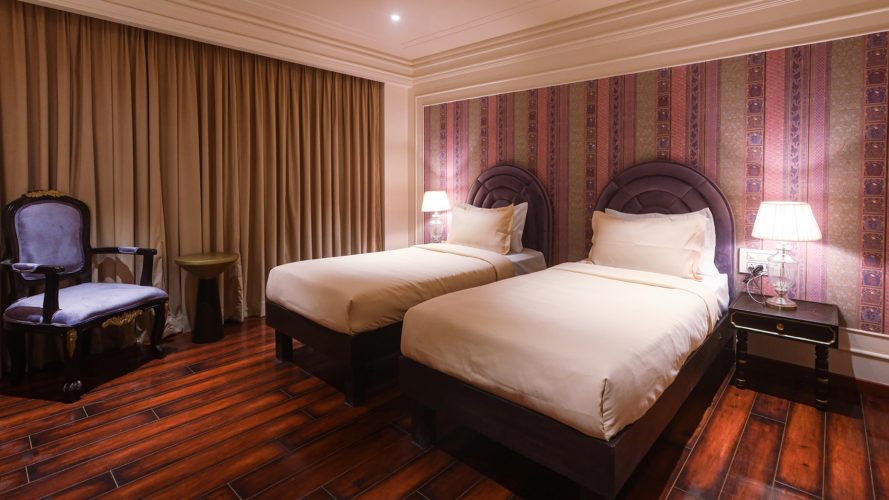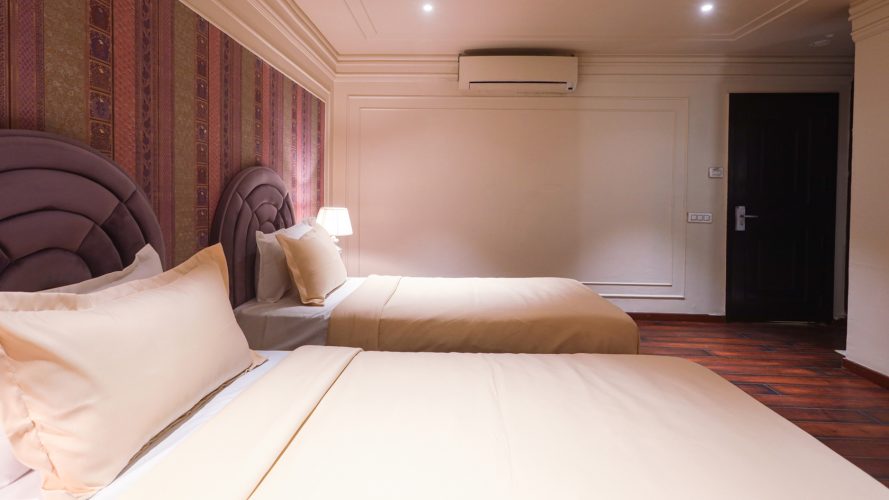Nestled in the heart of South Delhi, Hauz Khas Fort stands as a majestic reminder of the city’s rich historical tapestry. With its striking medieval architecture, lush surroundings, and serene water reservoir, this historical site attracts both locals and tourists alike. Whether you’re a history buff, a photography enthusiast, or someone who enjoys peaceful walks amidst ruins, Hauz Khas Fort offers an immersive experience.
In this blog, we will explore the significance of Hauz Khas Fort, its history, what you can expect when visiting, and some travel tips to make the most of your trip to this iconic location. And if you’re planning to stay near the fort, we’ve got the perfect hotel recommendation for you, ensuring a comfortable and memorable visit!
The History of Hauz Khas Fort
Hauz Khas, meaning “Royal Tank,” was originally built in the 13th century by Sultan Alauddin Khilji during the Delhi Sultanate era. The fort and its surrounding area were developed around a massive reservoir, which was designed to supply water to the city of Siri, one of Delhi’s oldest cities.
The reservoir, or Hauz, was integral to the city’s water supply, and the surrounding area became an important hub of learning and cultural activity during the reign of Feroz Shah Tughlaq, who constructed several important buildings and a madrasa (Islamic school) here in the 14th century.
Today, Hauz Khas Fort is a blend of historical ruins, Islamic architecture, and natural beauty, drawing visitors who want to step back in time and explore one of Delhi’s most serene historical sites.
Exploring Hauz Khas Fort: What to Expect
As you walk through the entrance of Hauz Khas Fort, you’ll immediately be greeted by a sense of grandeur, thanks to the intricately carved stone walls and arches that have withstood centuries of wear. The fort complex is large, with plenty of hidden corners and vantage points that offer spectacular views of both the old ruins and the lush greenery surrounding the Hauz Khas Lake.
Key Highlights of Hauz Khas Fort:
- The Reservoir (Hauz) The centerpiece of the Hauz Khas Fort is the Hauz Khas Lake, which was originally constructed as a water reservoir. Today, it’s a peaceful oasis surrounded by trees, making it a favorite spot for nature lovers and those looking to escape the hustle and bustle of Delhi. Don’t forget to take a leisurely stroll around the lake and enjoy the tranquil atmosphere.
- The Madrasa Built by Feroz Shah Tughlaq, the madrasa was once a thriving center of education and learning. The long corridors and large domed halls stand as a testament to Delhi’s role as a center of Islamic scholarship during the 14th century. Even today, the ruins of the madrasa evoke a sense of grandeur, and they offer a unique opportunity to imagine the life and culture of the past.
- Tomb of Feroz Shah Located within the fort complex is the tomb of Feroz Shah Tughlaq, the visionary ruler who played a key role in expanding the Hauz Khas area. The tomb’s simplicity and grandeur make it an essential stop for history lovers. The architecture of the tomb is distinct, with its octagonal shape and intricately designed interiors, showcasing the craftsmanship of the time.
- The Pavilions Scattered throughout the fort are several open-air pavilions. These structures are beautifully designed, featuring arched entrances, domed roofs, and picturesque views of the reservoir and surrounding greenery. These pavilions are ideal for taking a break, soaking in the historical atmosphere, and snapping some stunning photos.
The Wildlife and Flora Hauz Khas Fort is not only a historical site but also a haven for nature lovers. The surrounding park is home to various species of birds, including peacocks and parakeets. The fort’s location within the lush Deer Park means that visitors can enjoy the unique combination of wildlife, nature, and history.
Why Visit Hauz Khas Fort?
- Rich History: If you love immersing yourself in historical landmarks, Hauz Khas Fort offers an insightful journey into the medieval history of Delhi.
- Photography Opportunities: The stunning ruins combined with natural beauty provide excellent spots for photography. Whether it’s the arches of the madrasa or the serene lake views, every corner of the fort presents a photo-worthy moment.
- Peace and Tranquility: Unlike many other crowded tourist destinations, Hauz Khas Fort offers a peaceful retreat, perfect for quiet reflection and scenic walks.
- Proximity to Modern Amenities: The fort is located in the trendy Hauz Khas Village, known for its hip cafes, boutiques, and art galleries. After exploring the fort, you can relax and grab a bite to eat at one of the nearby restaurants.
Best Time to Visit Hauz Khas Fort
While Hauz Khas Fort is open throughout the year, the best time to visit is during the winter months (October to March) when the weather is pleasant and comfortable for exploring. During the monsoon season, the greenery around the fort becomes particularly lush, adding to the beauty of the area.
It’s also advisable to visit early in the morning or late in the afternoon to avoid the midday heat and fully enjoy the peaceful atmosphere.
Travel Tips for Hauz Khas Fort
- Entry Fees: Hauz Khas Fort is free to enter, making it an affordable destination for both locals and tourists.
- Timings: The fort is open daily from sunrise to sunset.
- What to Wear: Comfortable walking shoes are a must as the fort complex is large, with uneven surfaces and many stairs.
- Respect the Heritage: Remember that Hauz Khas Fort is a protected historical site, so avoid littering, vandalism, or disturbing the local wildlife.
Hotels Near Hauz Khas Fort
If you’re planning to explore Hauz Khas Fort, staying nearby can enhance your experience. The surrounding area is full of boutique hotels and guesthouses, allowing you to immerse yourself in the history and modern-day vibrancy of South Delhi.
Staying close to Hauz Khas means you can visit the fort early in the morning to enjoy the peace and avoid crowds, or spend your evenings strolling through the village after a day of sightseeing.
At Saga Hotel, our hotel is conveniently located near Hauz Khas Fort, offering easy access to this historical gem. Whether you’re a tourist eager to explore or a local looking for a weekend retreat, our hotel provides the perfect blend of comfort and proximity to the city’s best attractions.
Conclusion
Hauz Khas Fort is a must-visit destination for anyone exploring Delhi. Its blend of history, architecture, and natural beauty makes it one of the city’s most beloved landmarks. Whether you’re seeking to learn more about Delhi’s rich history, enjoy a peaceful walk, or simply capture some stunning photographs, this ancient fort has something for everyone.
If you’re planning a trip to Hauz Khas Fort, why not stay nearby for maximum convenience? At Saga Hotel, we offer luxurious accommodations just minutes away from the fort, ensuring your stay is as enjoyable and memorable as your visit to this incredible historical site. Book your stay today and explore Hauz Khas Fort with ease and comfort.















